If your telescope suffers from optical aberrations like chromatic aberration, vignetting or coma, this guide is for you.
Telescopes work by collecting light and then bending the rays to bring them to focus at the eyepiece or camera sensor, at a point known as the focal plane.
The action of bending light introduces unwanted aberrations, and although modern telescope designs produce amazing results, aberrations will always exist to some extent.
It’s the telescope optician’s job to minimise these optical aberrations as far as possible to produce a bright, high-fidelity view.

Though some aberrations are barely visible when observing they become apparent once a camera is introduced.
There are essentially two methods of bending the light from distant objects: by refraction though lenses and by reflection from the surface of mirrors.
Each method produces a range of aberrations, although some are common to both types.
Some aberrations can be seen during a star test, which is a process in which a bright star is examined out of focus and at high magnification.
Such a star will show an enlarged Airy disc and close examination on either side of correct focus can reveal much about the quality of the optics by noting the formation of the concentric rings formed in the image.
There may also be instances in which your telescope mirror needs to be recoated to solve some issues.
Below, we’ll explain what causes the most common aberrations found in amateur telescopes.
Chromatic aberration
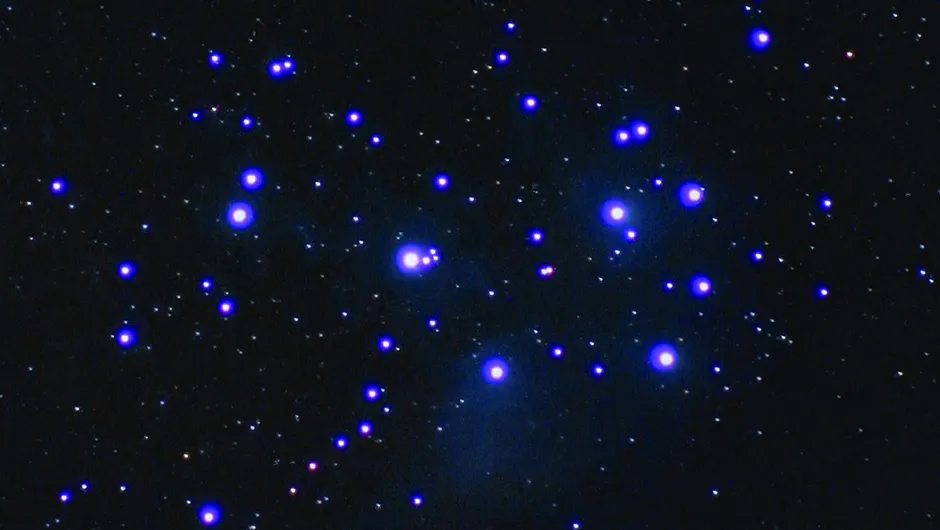
Chromatic aberration affects refractors, especially achromats, but can be mildly present in apochromats
The glass lens elements in a refractor are unable to focus all the colours of light at the exact same position because the refractive index of glass varies with the wavelength of the light passing through it, resulting in colour fringing.
This shows as a blue halo around bright stars and as a yellow and blue colour cast to the opposite edges of the Moon and planets.
The effect can be minimised in scopes that use two glass elements made from different types of glass (historically crown and flint glass).

This design, known as an achromat, brings red and blue light to the same point of focus, but colours in between these two wavelength extremes still focus at a slightly different point.
Chromatic aberration also decreases with an increase in the focal length.
The inclusion of extra-low dispersion (ED) glass elements can also deliver very good results.
There is also a more complex design called an apochromat that is specifically designed to bring all the wavelengths of visible light to the same point of focus, resulting in high-quality images.
It uses three glass elements, one of which is commonly made from ED glass.
Field curvature

Field curvature affects all telescope designs and is one of the most common optical aberrations.
Curved surfaces are employed to bend light in both refractors and reflectors, and this results in a curved focal plane where objects at the centre of the field of view are in focus on the camera’s sensor but those further out from the centre, known as off-axis, are out of focus.
This is not such a big issue with observing as the eyepiece and the eye itself compensate to a large extent.
However, the flat surface of a camera’s sensor is unforgiving and photographic images will clearly show off-axis stars as being out of focus.
Short focal length telescopes – especially Newtonian reflectors – exacerbate this problem, but field curvature is present in most telescopes to some extent.
The exception to this is with refractors employing an optical design known as a ‘Petzval’, in which there are four lens elements, the front pair correcting chromatic aberration and the rear pair correcting field curvature.
Coma
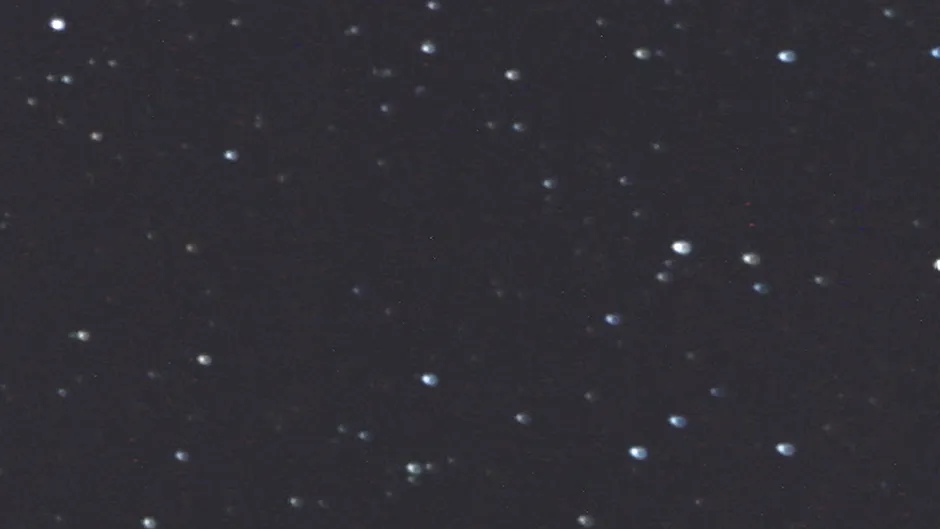
Coma predominantly affects Newtonians, but also Schmidt-Cassegrains and Maksutov-Cassegrains.
Coma is an aberration that occurs predominately in reflectors and manifests itself in the appearance of ‘comet-shaped’ stars with their brightest portion pointing towards the centre of the field of view.
Though not too obvious when observing through an eyepiece, coma becomes quite intrusive in images, especially when a large sensor is in use.
Just as with field curvature, coma becomes worse with shorter focal length telescopes.
Coma increases with distance from the centre of the mirror, which means that the aberration affects off-axis light.
There are two main types of primary mirrors used in Newtonian telescopes: lower cost spherical mirrors, which form part of a sphere and are supplied with low-budget telescopes, and the more popular parabolic mirrors, which are sculpted into the shape of a parabola.
Spherical mirrors are standard in Schmidt- and Maksutov-Cassegrains but are largely corrected by the front corrector plate/meniscus lens.
Spherical mirrors suffer from spherical aberration in which light falling toward the edges of the mirror is focused at a different point to light falling closer to the centre.
This means that with the exception of very long focal length telescopes, they are unable to focus the whole field of view at the same plane.
A parabolic mirror focuses light from across its surface at the same plane but unfortunately, there is a trade-off here and this design introduces coma.
Vignetting

Vignetting affects all telescope designs and again is a common type of optical abberation.
Most optical systems don’t fully illuminate the field of an eyepiece or the surface of larger camera sensors, resulting in stars of equal magnitude appearing dimmer at the edges of the field than at the centre.
This phenomenon is known as vignetting. It is particularly noticeable in deep-sky images, where the centre of the field of view can appear markedly brighter than the periphery.
Typical causes include the poor positioning of baffles within a refractor, a secondary mirror that is too small to fully intercept the light cone from the primary mirror in a Newtonian reflector or the use of narrow adaptor tubes to attach the eyepiece or camera to the telescope.
Catadioptric scopes like Schmidt-Cassegrains, Maksutov-Cassegrains or Ritchey-Chrétiens require a baffle tube to prevent light from the front of the telescope falling directly onto the focal plane before reflection from the primary mirror and this can cause vignetting.
It is important that focus tubes are of large enough diameter to avoid obstructing the light cone and the restrictive visual back on many Schmidt-Cassegrains can be a particular problem.
Pinched optics
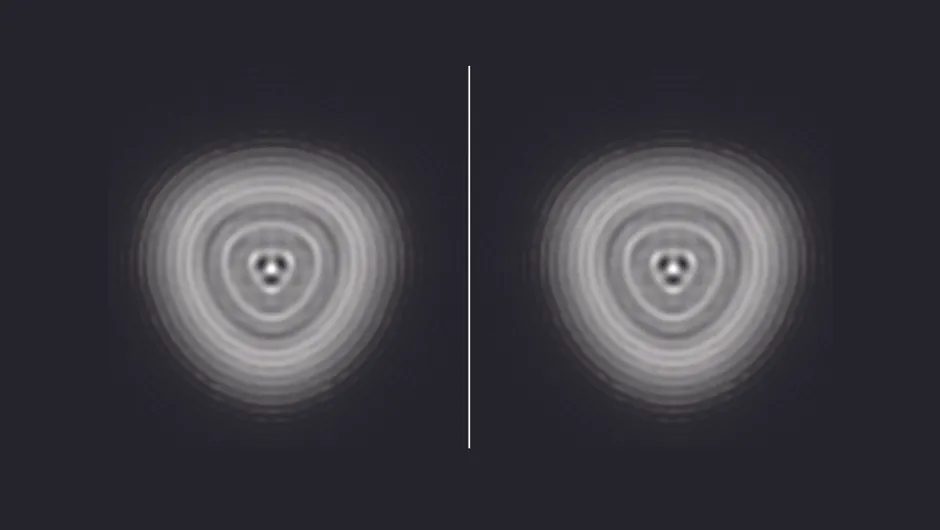
Pinched optics can affect all telescope designs.
In a refractor, the individual lens elements are held in place within a cradle called a lens cell; in a reflector, the primary mirror is held in place by a series of small clips that hold the mirror in an adjustable carrier.
The lens cell or mirror clips must be adjusted to hold the optical elements firmly in position at all angles of elevation, but not so tightly as to cause a tiny compression of the optical surface.
Failure to get this very fine adjustment correctly set at the factory can result in the mirror being slightly deformed resulting in the optics being ‘pinched’.
Images of stars captured through a scope suffering from pinched optics show a clear distortion giving bright stars a triangular appearance sometimes with small flares emanating from the three ‘corners’.
Temperature can have a big effect on this aberration with a telescope, especially a refractor, having no apparent problem until the temperature drops and the various components start to contract.
Astigmatism
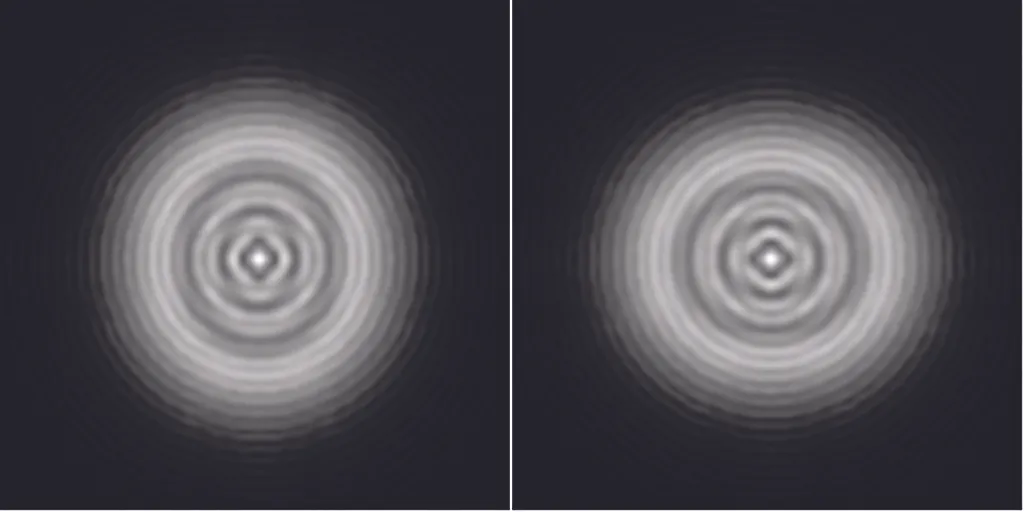
Astigmatism can affect refractors and Ritchey-Chrétiens.
The optical path through a telescope has two planes, the tangential plane and the sagittal plane.
These two planes are at right angles to one another.
To visualise this, imagine that you are looking at the side of the light cone as it leaves the telescope lens or is reflected from the telescope’s mirror on its way to the focal plane.
This triangular shape is the tangential plane.
Now imagine looking down on the light cone from above the telescope.
The triangular shape of this light cone is the sagittal plane.
These two planes define the focal length of the telescope and they should be identical in length to ensure that their focal planes coincide exactly.
Any deformity in the shape of the lens or mirror can result in the focal planes being at slightly different points producing distorted star shapes.
A defocused star test will show this distortion in the Airy disk.
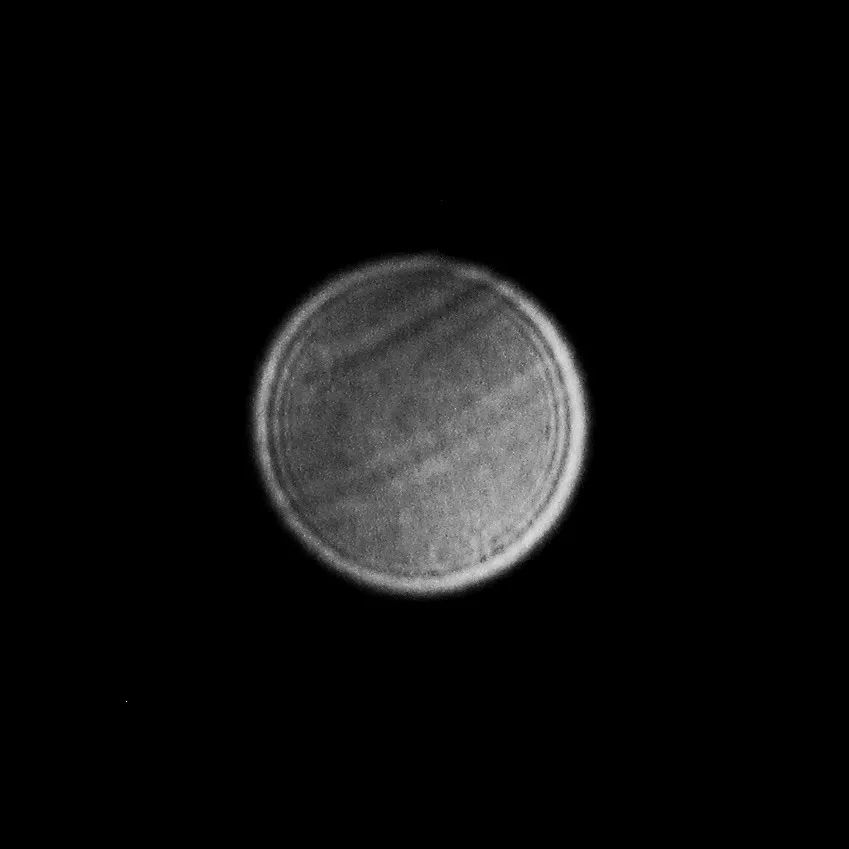
Fixing telescope optical aberrations
Unfortunately, not all aberrations can be eradicated: some are caused by manufacturing or assembly errors, others are simply a limitation in the telescope’s design.
Of the six we have looked at, chromatic aberration and astigmatism are unlikely to be fixable at home.
However, the other four can be tackled successfully.
Field curvature can be corrected by the use of an external field flattener, available in two designs, one that flattens only and a second type that also reduces the apparent focal length.
These are very popular with refractor users.
Coma can be removed by the use of a coma corrector.

These have the added advantage of increasing the available backfocus, which is in short supply with Newtonian reflectors.
Pinched optics can be corrected by slackening off the retaining clips on the primary mirror so that they just hold the mirror in place, or by careful adjustment of the lens cell in a refractor.
The latter may be better carried out by a professional.
Finally, vignetting can be dealt with through calibration with flat frames during post processing – this can make a huge difference to your images.
If you have any issues with your telescope and would like advice, email us via contactus@skyatnightmagazine.com.
